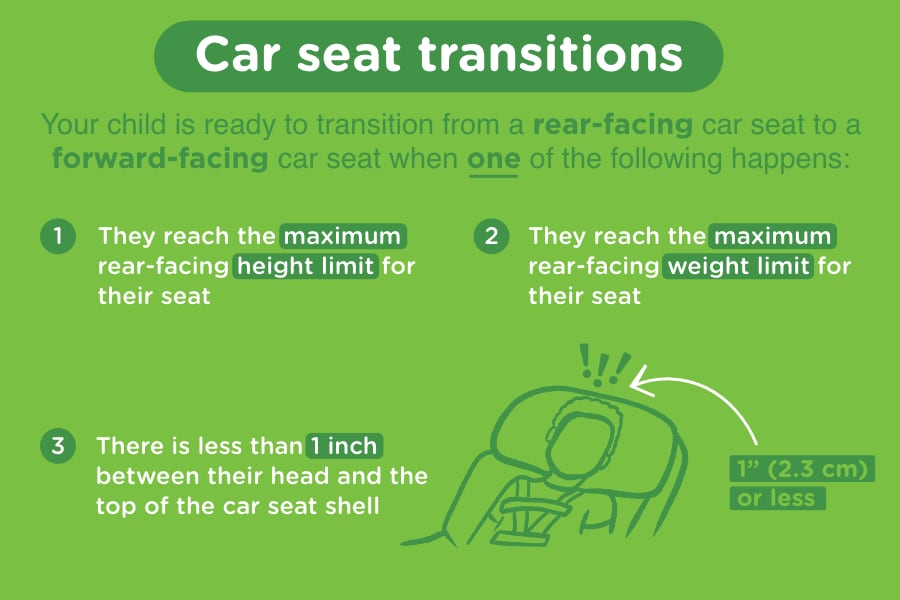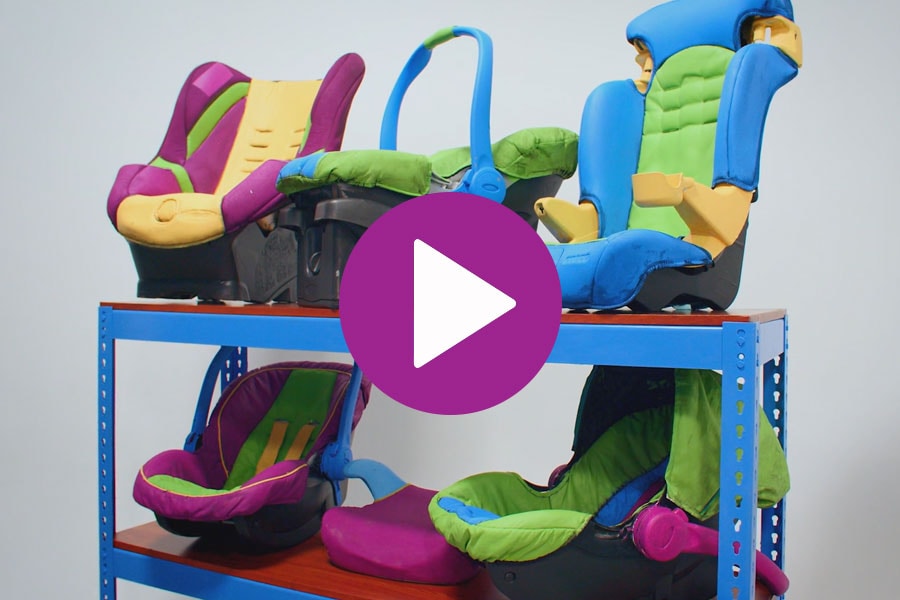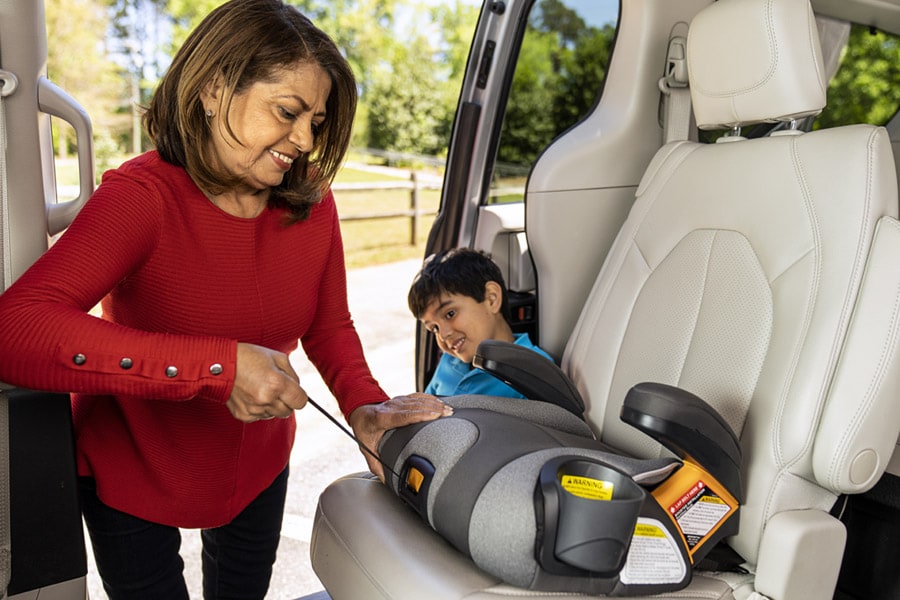FAQ: Forward-Facing Car Seats
Do you know how to install your child’s forward-facing car seat? Whether you’re using your vehicle’s LATCH system or seat belt, our certified child passenger safety technicians (CPSTs) are answering the questions they get asked the most.
In this article:

When should my child switch to a forward-facing car seat?
It depends. The American Academy of Pediatrics (AAP) suggests you keep your child rear-facing as long as possible because it’s the safest way for them to ride. Unless your child is taller than the maximum rear-facing height limit, you should not transition them to a forward-facing seat or turn your convertible seat to face forward. It is normal and OK for children to sit “crisscross applesauce” or with their knees bent and feet up against the back of the vehicle seat.
How do I install my child's forward-facing car seat?
Check out our tips for installing forward-facing car seats. For in-depth installation and fit information, watch the general car seat safety and forward-facing videos below. And always remember to consult both your vehicle’s owner manual and car seat’s user manual.
Check your installation by making sure it’s level and by performing the “inch” test:
- Grab your child's seat at the belt path (the bottom of the car seat where it's secured in the vehicle seat).
- Tug it from side to side, then front to back. If the car seat moves more than 1 inch in any direction, it's not installed tightly enough.
-
Car Safety Basics for Kids
As a certified Child Passenger Safety Technician, Ava will walk you through every stage of car safety for kids.
-
Forward-Facing Car Seat Safety Tips
-
How to Install Forward-Facing Seats With Lower Anchors
-
How to Install Forward-Facing Seats With a Seat Belt
How do I make sure my child is safely fastened in the car seat?
After securing your child in the seat, the following needs to be true to ensure their safety:
- The chest clip is level with your child's armpit.
- The straps are not twisted.
- The harness straps are tight enough to pass the "pinch" test.
- The harness straps are at or just above your child's shoulders.
- There is at least 1 inch between the top of your child's head and the top of the seat.
The “pinch” test: Place two finger on the harness at your child's shoulders and hips. If you can pinch the material together at all, the straps are not tight enough.
It's normal for kids to complain about straps being too tight, but when it comes to car seats, tighter generally means safer. To make sure you're not overtightening, check that you can fit two fingers underneath the harness. Even if your child gets small red marks on their neck from the straps, chances are the straps are not too tight. If the straps are rubbing, consider pulling the fabric from the neck of your child's shirt underneath where the strap meets their skin.
What if my child's head extends above the top of the seat?
Always check your car seat’s manual for specific information, but in general, your child’s head should be at least 1 inch below the top of a rear-facing seat to be a proper fit.

When should my child switch to a booster seat?
Always check the height and weight restrictions in the car seat manual, and try to maximize the seat they're in for as long as you can based on your child's measurements. Each time you switch to a new car seat stage for your "bigger, older" child, the new car seat generally offers less than the car seat before.
Once your child reaches the height or weight limit in their forward-facing seat, you'll have two types of booster seats to choose from: high-back and backless (also known as no-back).
If your child has an injury or is showing signs of illness, call your doctor or visit an urgent care center. If your child has a life-threatening injury or illness, is having trouble breathing or is unconscious, call 911 and/or visit an emergency department immediately.


